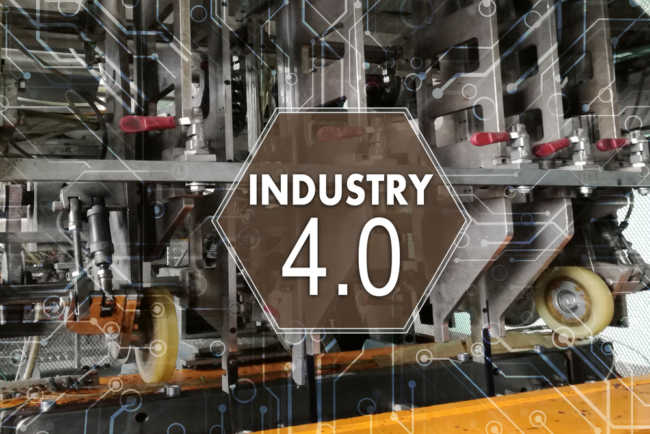IIoT Efficiencies to Consider
The use of industrial automated machinery and control systems continues to grow as factories and plants implement sensors and actuators to monitor environments and the machines in these spaces. The adoption of technology in these environments has been coined the Industrial Internet of Things (IIoT). And, as hardware and software solutions continue to drop in price ($30-$300), industries are adopting technologies as tools for economization of resources and energy – leading to increased profits, less waste, and overall increases in operational efficiency. These cloud connected devices are sensors, actuators, and controls that keep an eye on the many different parts of a production process or its environment. One industry to realize the benefits of connected solutions is Food and Beverage, specifically bottling and production plants.
As juices and kombucha sales continue to grow in popularity across the United States, so too has the need to ensure quality of fresh products with cold storage and efficient production processes. Allowing for even a single error in the fermentation process or the cold storage monitoring will lead to a loss of product and/or lost revenue. Not to mention, the stress to plant employees when production is delayed and a vendor’s orders needs filling. To avoid this, the Industrial IoT is being applied across industrial processes alerting employees and management of important details happening in real-time – machine stoppages, production or environment inefficiency, and even employee operating efficiency/production.
The collection and computation of this sensor and actuators data allows decision-makers to determine business plans and strategies with greater focus on detail and minute margins. Like the cold chain monitoring of Kombucha, let’s explore some ways the Industrial Internet of Things can help your factory or production process operate more effectively.
IIoT Efficiencies to Consider
- Operational Efficiency with Monitoring
Business Operation practices and processes are immensely benefited by IIoT as a result of the vastly improved operational efficiency with machine and environment monitoring. This includes optimized asset utilization, enhanced uptime, and better inventory management, all of which can be credited to predictive maintenance and remote/scheduled management features of IIoT. Manufacturers can save significantly with preventative maintenance schedules, eliminate costly machinery failure, and decrease downtime simply by knowing – is my machine on; how much energy is the machine consuming; and which parts needs to be serviced next. By applying “run-to-fail” timing tables and determining a parts complete life cycle, comparative analytics can alert manufacturers or line employees when a system might be nearing failure and which parts might be nearing their usual life.
- Human and Machine Collaboration
This should not come across as any big surprise when we say that IIoT can enable a seamless collaboration between humans and machines. The IIoT is paving the way for uninterrupted and heightened levels of productivity with comparatively improved worker happiness in the workplace. When machines can talk to machines, we can run production lines longer and with fewer breakdowns, yielding more revenues. But when machines can talk to humans too, we can run efficient factories that maximize product chain potential with situational awareness, while also protecting employees from harmful situations. By knowing what is happening in a factory or plant, IIoT can alert employees and officials of hazardous situations and how to respond, thus avoiding emergencies and mitigating damages to machines or property. For example, a pressure sensor might be placed in a tank and after a pressure reaches a maximally safe level, a trigger is activated and a pressure valve is opened in the tank, thus alleviating risk and ensuring safety to employees.
- Connected Software Ecosystems
IIoT brings new and improved connected ecosystems (both machine-to-machine and machine-to-human), thus bridging the gap between industrial software platforms that are typically known for fading the boundaries of the traditionally operating manufacturing industries. The data devices collect is important, but it is equally imperative to have the software available to exchange this collected data into usable information. Once you have an ecosystem designed to control a production process, anytime a piece of the supply chain falters and you need to know. With the appropriate software inplace a business can extract values via:
- Demand planning and predictive forecasting: a software that uses, among other data sources, sales data from previous periods of time to estimate future sales —and schedule the correspondent future production requirements.
- Inventory management software: calculating production rates vs current inventory, managers and vendors can determine how much and when inventory should be ordered. And when this process has been perfected it simply be automated with IIoT applications with RFID scanning and volume controls.
- Logistics tracking: attaching devices to assets and fleets let’s us know the conditions of raw materials and inventories, but also their exact locations. With the IIoT we can now precisely calculate arrival times to the shop floors thus improving last mile logistics for customers and vendors.
With many of these efficiency solutions already being implemented across the globe, IIoT increases their value to provide more holistic insights: ii.e. demand planning, besides sales data, inventory capacity, machine monitoring, asset monitoring, and sales loses due to product inefficiencies.
The Industrial IoT technology harnesses the Internet to expand an organization’s capability to communicate information across the business, from equipment in the field to operations and management, regardless of location or mobility. Designed to efficiently assist decision-making and reduce waste across ecosystems the IIoT is about doing jobs that already exist more efficiently or enabling things to do jobs that previously were not being done. Now it is up to manufacturers and their IT or OT departments to determine if cloud connected solutions and digitization are valuable to the bottom line from a cost savings perspective or if it is better to continue dribbling away profits with inefficient operational standards and wasted time.
This article was written by Cameron Klotz, Director of Operations at Ubidots, a cloud IoT software powering IoT integrations and applications for industrial manufacturing, hospitals, research labs, and institutions across the globe. A graduate of UC Berkeley, Cameron previously worked in operations and project management at Getaround Inc. and UBS Financial Services concentrating on efficient IT/OT convergence and quality assurance. Originally the article was published here.



